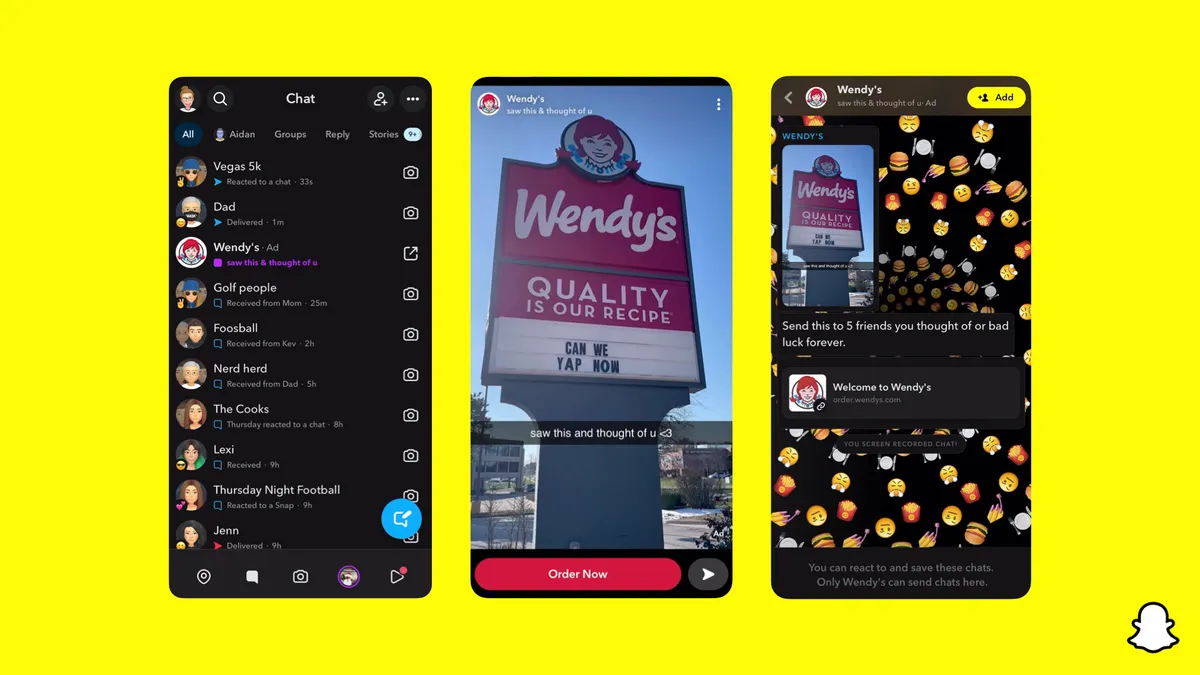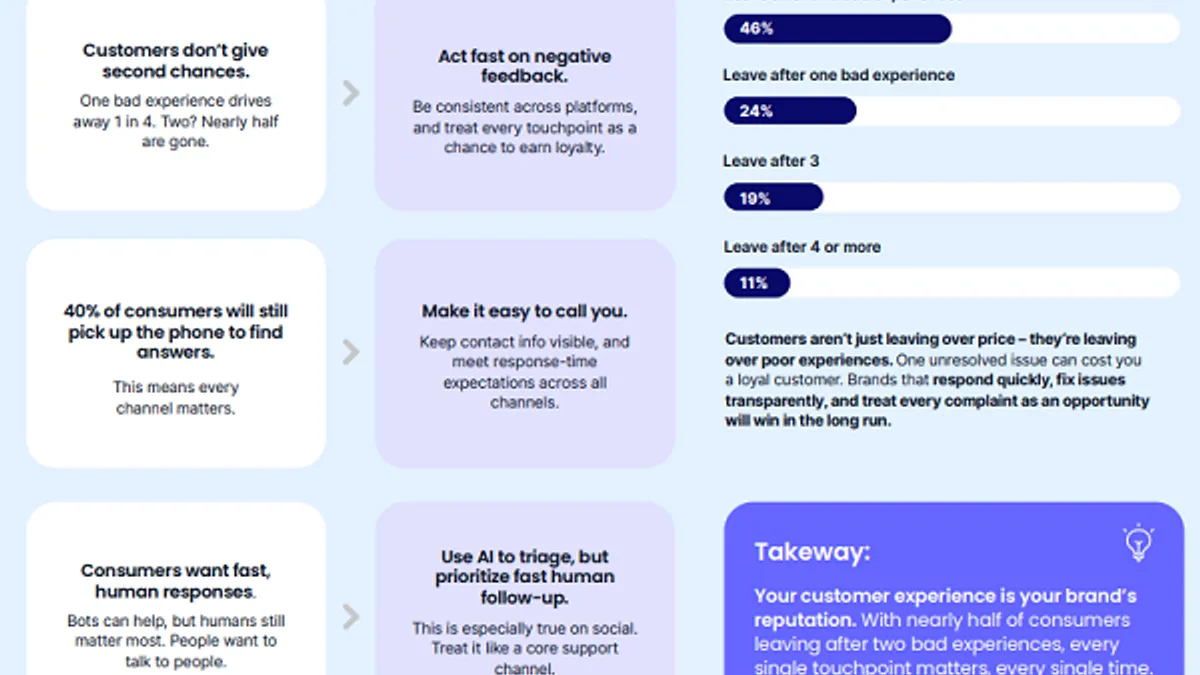After more than a year of speculation and hype, Quibi finally debuted on April 6. The timing couldn't be worse for the mobile-first video platform as the coronavirus pandemic was already months into upending daily life around the world.
Founded by Jeffrey Katzenberg and Meg Whitman, Quibi promised to finally solve the short-form, mobile-first video question that others — from Verizon's Go90 to Vivendi's Studio+ — had failed to answer. With industry heavyweights at the helm, more than a billion dollars in funding and an impressive amount of upfront ad commitments, the platform was poised to be a major player in the mobile streaming world.
But who needs short-form, mobile-only videos when few people are commuting, waiting in lines or taking a quick entertainment break at their desk during lunch? At-home consumers' video needs seemed best served by the growing field of TV-oriented streaming platforms, as evidenced by Netflix's blockbuster subscriber figures in Q1.
Quibi stumbled a bit out of the gate, with an estimated 300,000 downloads on launch day, paling in comparison to Disney+'s 4 million release-day installs (but still ahead of the 45,000 downloads for subscription service HBO Now back in 2015). Quibi's numbers improved to 1.7 million on the week, suggesting that viewers were willing to test the ad-supported service's 90-day free trial, especially with more time at home.
Whether Quibi's novelty will last is a closely-watched question, and changes already forming at the platform — including an accelerated push to enable casting the mobile-only service to TVs — suggests that it will need to be more agile to succeed in an uncertain landscape.
The Quibi experience
For now, the Quibi experience delivers what was promised, even if its use case is limited amid mass shelter in place orders. With most episodes of its 50-show launch slate clocking in between six and eight minutes, viewers are subject to about two and a half minutes of advertising per hour in the form of pre-roll ads.
First-year advertisers include AB InBev, Google, Discovery, General Mills, PepsiCo, Procter & Gamble, Progressive, Taco Bell, T-Mobile and Walmart. In videos screened by Mobile Marketer, ads were either six-, 10- or 15-second versions of previously released creative, including Walmart's first Super Bowl ad that debuted earlier this year. A short-form version of T-Mobile's "We're With You" spot referenced the company's efforts during the pandemic, though not by name.
In certain cases, the ads took advantage of Quibi's Turnstyle format that lets mobile users flip between horizontal and vertical viewing. But in general, brands so far seem content to repurpose previous social and digital video content rather than take advantage of Turnstyle or Quibi's other features, reminiscent of early attempts by mobile marketers to use the same creative across social platforms. However, as the pandemic has scuttled ad production and caused several advertisers to use archival and stock footage, it remains to be seen whether future Quibi ads will look and feel native to the platform.
"Creating a new format for ads isn't something that goes unnoticed. When Snapchat launched its vertical video 10-second ad format, that was a heavy lift to get marketers to jump on board," Tal Chalozin, co-founder and CTO of ad platform Innovid, told Mobile Marketer via email.
"Snapchat needed to invest in substantial creative resources, education and aid to get marketers to buy in. Quibi will need to do the same," he added.
While Whitman assured CNBC that "people have in-between moments at home" ripe for short-form mobile viewing, the company has already pivoted its strategy. Quibi is reportedly accelerating plans to enable casting the service to TV, a move Whitman said was always planned — yet one that wasn't mentioned when the company was positioning itself as "mobile-only" in a pre-pandemic landscape.
A competitive marketplace
Allowing consumers to cast and binge Quibi's shows could keep eyeballs on the service and its ads during the public health crisis — at least until a point when mobile-first video resumes its ascendance. But while the move to TV might keep the platform afloat, it also puts Quibi in a crowded sea of video streamers.
Established paid subscription streaming services like Netflix, Amazon Prime, Disney+ and Apple TV have continued the arms race for content during the outbreak. Several pre-pandemic releases were made available on-demand, and Netflix bought the romantic comedy "The Lovebirds" from Paramount — making it the first planned theatrical release to debut on streaming, following Universal's "Trolls World Tour" skipping theaters for video-on-demand.
"People are using this lockdown to capitalise on the creativity and connection they can glean from social media apps, while Quibi offers only curated content."

Danyaal Rashid
GlobalData, thematic analyst
On top of that, the streaming ranks will soon face new platforms from major media players NBCUniversal — Peacock began rolling out on April 15 — and WarnerMedia's forthcoming HBO Max on May 27. Plus, Quibi has other mobile-first competitors in the form of Toronto-based Snibble and Los Angeles-based Ficto, the latter of which names "Pokémon Go" developer Niantic as a partner. That's to say nothing of social video sensation TikTok, which continues to thrive amid the pandemic.
"People are using this lockdown to capitalise on the creativity and connection they can glean from social media apps, while Quibi offers only curated content," Danyaal Rashid, thematic analyst at GlobalData, told Mobile Marketer via email. "TikTok is looking to add 10,000 staff following a surge in demand due to COVID-19, while Quibi is left scrabbling for a foothold."
Making matters worse for Quibi is its lack of a content library like those owned by Netflix, NBCUniversal and WarnerMedia. As the pandemic continues to stall video production, Quibi could run out of new content.
Katzenberg has said that it's set through Halloween in terms of its programming slate this year, and some shows are pushing for remote production. But that date gets closer every day, and with the end of stay-at-home orders not in sight at a national scale, all streaming services are feeling production pressures. Quibi has reportedly been asking media executives "what do you have and how fast can you get production going?" according to Digiday.
Obviously, the coronavirus pandemic is disrupting life and industry around the globe, and Quibi is no exception. Still, a platform that faced big questions about whether industry veterans could figure out what younger consumers seek in mobile video is feeling the crunch. And those ad commitments for 2020 might be a $150 million bet that doesn't pay off — which could end up being a drop in the bucket for the ad industry at large.
"There's clearly an appeal to delivering a new way to break through the clutter for brands, and brands like to be the 'first' to do something," Innovid's Chalozin said. "However, it's one thing to close a big sponsorship deal. It's another to keep a large pool of advertisers coming back over and over again, and move beyond experimentation."























